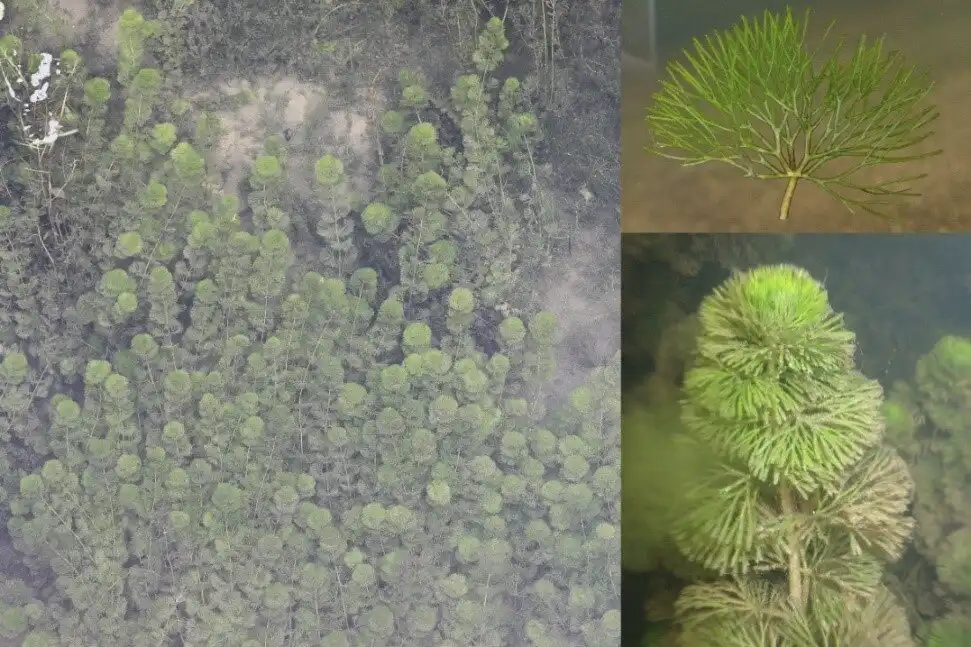Invasion by introduced species has been listed as one of the main threats to freshwater biodiversity worldwide. Invasive species have resulted in reduced abundance and diversity of native species in invaded natural habitats.
In the late 1980s, Carolina fanwort (Cabomba caroliniana) was introduced to China as an aquarium plant due to its beautiful fan-shaped dissected leaves. However, it soon escaped as a serious invasive threat to freshwater ecosystems.Recently, researchers led by Dr. Huang Xiaolong from Prof. Li Kuanyi‘s team at the Nanjing Institute of Geography and Limnology of the Chinese Academy of Sciences (NIGLAS), along with their collaborators, have investigated why C. caroliniana is so successful in invading China through field investigations and a mesocosm experiment. Their findings were published in Diversity and Distributions.
In field investigations, the researchers collected 72 aquatic plant quadrats dominated by one of three plant species — native Hydrilla verticillata, Myriophyllum spicatum and invasive C. caroliniana—in East China. They found that water turbidity and underwater photosynthetically active radiation (PAR) were main factors affecting the relative coverage and abundance of the three submerged plants.
They then conducted a mesocosm experiment to explore the responses of functional traits of the three species to different levels of underwater PAR. The results showed that the performance of C. caroliniana was superior to that of the two native species at low underwater PAR, indicating a better ability of this species to attenuate light.
“If underwater darkening continues, submerged plants that are not suitable for or sufficiently tolerant of growth under these conditions may vanish, and plants that are suitable for these conditions, typically invasive plants, may prosper,” said Dr. Huang.
The results also indicate that if water bodies maintain low turbidity and high underwater PAR after ecological restoration, the native aquatic plant vegetation will dominate, thus constraining the growth and spread of invasive plants.
“The ecological restoration of aquatic habitats that relies on reconstruction of aquatic vegetation is a feasible strategy, but it must be based on habitat transformation. After the ecological restoration is completed, water bodies can maintain low turbidity and high underwater PAR, and thus natural restoration of aquatic vegetation can be achieved,” said Dr. Huang.
Read the paper: Diversity and Distributions
Article source: Chinese Academy of Sciences
Author: Li Yuan
Image: Cabomba caroliniana in its introduced natural habitats. Credit: NIGLAS






